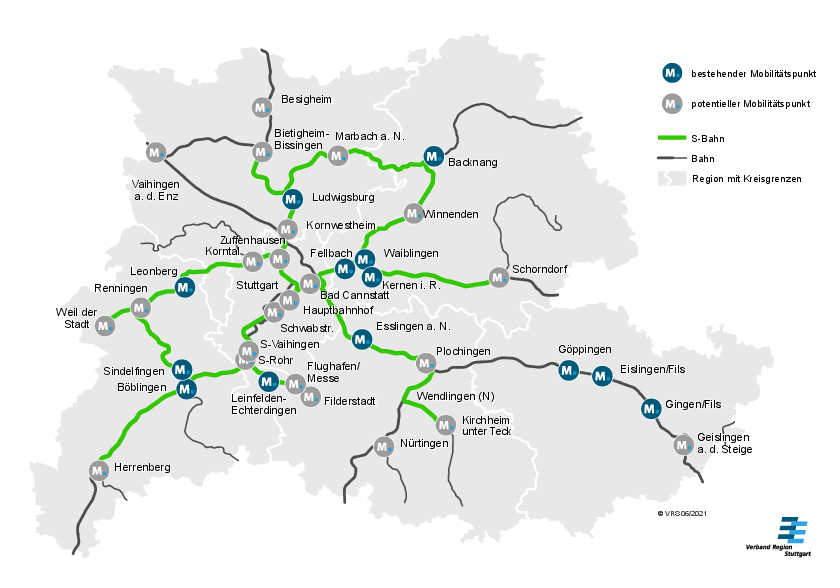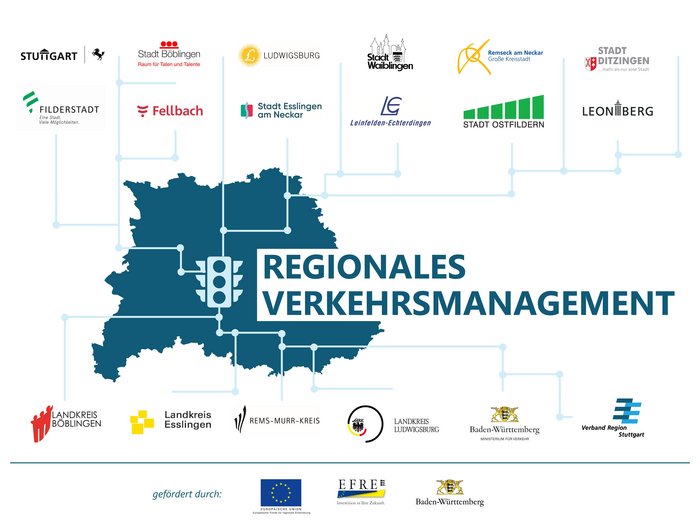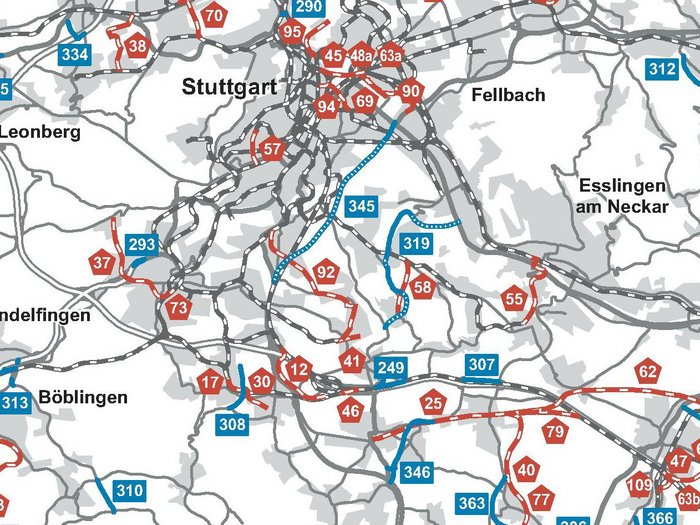If you want to promote public transport, you have to create attractive access options. After all, mobility works best outside the big cities when it is possible to switch between different modes of transport without any problems. The easier it is to get on, the better the transfer and the greater the chance of improving mobility services without having to build new roads. In the Stuttgart region, this is demonstrated by the regional mobility points: These are central transfer points with special service standards. At regional mobility points, you can not only board trains, suburban trains or buses, but also obtain further information on means of transportation, services and mobility. The facilities include cab and car sharing stations and RegioRad stations. Short-term parking spaces for dropping off and picking up passengers, as well as charging facilities for electric cars or pedelecs, round off the intermodal mobility offering. The growing popularity of cycling is taken into account with additional - also lockable - parking facilities for bicycles as well as maintenance and repair services. The aim is clear: to get to the station easily and emission-free without taking up too much space on the street or in the parking lot. On site, you can recognize a mobility point by the information terminal with the mobility point logo. They provide information about departure times in real time, all mobility offers at the location and connections to the region. In addition, events and places of interest can be called up and further information can be obtained by telephone around the clock at the touch of a button.
There are currently designated regional mobility points in 13 municipalities, which can be recognized by the interactive information terminals. Around 3.5 million euros in funding from the regional "Model region for sustainable mobility" program was invested in the expansion of the station square, for example in Sindelfingen, and facilities for bicycle traffic such as the Radhaus in Waiblingen. The information terminals and the conversion of the station building with bicycle parking garage in Eislingen, for example, were financed with funds from the RegioWIN program of the state and the EU. A total of 3.2 million euros in subsidies and 0.7 million euros of the Stuttgart Region Association's own funds were made available for such measures.
Networking offers at the mobility points
Overview flyer on the offer at the mobility points for PDF download
Further expansion of the mobility points network

This can continue, as the regional assembly's transport committee has identified the potential for around 20 additional stations. The committee is prepared to invest EUR 500,000 per year over a period of up to 10 years to expand these additional stations. In addition, 300,000 euros are to be invested in a building for multimodal mobility with a special function and design, should this be constructed as part of the International Building Exhibition 2027, for example.
The topic of e-scooters is always a controversial one. In order to meet the increasing demand and at the same time have a tidy station, local authorities can set up a Mobility Hub with Deutsche Bahn through the Stuttgart Region Association. It combines e-scooters and currently RegioRadStuttgart bikes at a designated location at the station. The establishment of these hubs with simple signage and ground markings is funded with 5000 euros for a period of one year.
Back to overview Mobility










